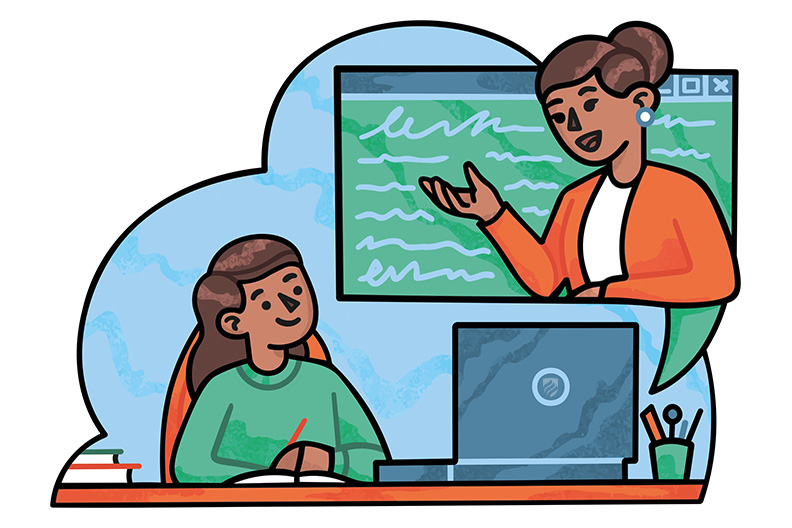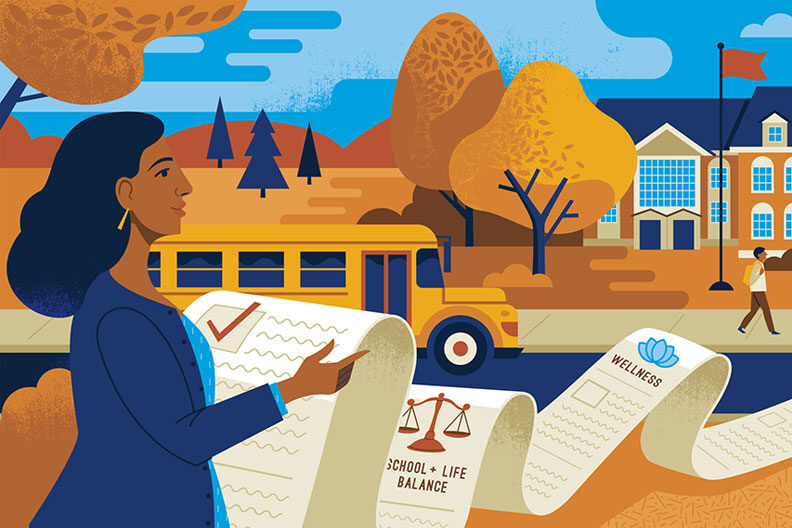Teacher Retention: How to Keep the Best from Leaving
CHALKING THE LINE | BY DEBRA MEYER | 8 MIN READ

Teaching and learning have changed fundamentally since the last Chalking the Line blog post. For the first time in their careers, many teachers interacted with their students remotely, including saying goodbye for the school year virtually.
Looking forward to the possibilities of late-summer school openings, there are myriad unanswered questions about when schools will open, how classrooms can be safe from the coronavirus, and if all teachers will be returning. The possibility of teachers choosing not to return to the profession this fall could create an unprecedented shortage just as schools need more teachers, given the limitations on class size due to social distancing.
In my last post, I discussed how to attract new teachers to the profession. Most of this fall’s new teachers had their student teaching experiences interrupted, and many did not student teach due to the pandemic. While we know the challenges that typically face teachers in their first few years, we can only guess how teaching in a “COVID-safe school” or remotely will elevate those challenges to new levels.
What we desperately need is to keep the best teachers in the classroom with the students—especially now, when students’ education is being disrupted and, for some, is not being provided. Teacher retention is every bit as critical to the future of education as recruiting new people to the profession.
Since the idea of teachers leaving creates the image of a door closing behind them, I propose four “doors” to help explain why good teachers leave the classroom. I’ll also discuss how opening these doors could keep the best teachers in the classroom for long, successful careers.
The Revolving Door of New Teachers
In recent years, states have begun to address the increasing teacher shortages in their schools. But one obstacle persists: most new teachers will leave within a few years, creating a revolving door. As Nick Morrison reported in Forbes a year ago, only a third of teachers stay in the profession past the first five years.
While we know a lot about new teachers’ decisions to stay and leave the profession, we have not acted on this knowledge to improve teacher retention in comprehensive ways.
New teachers are expected to perform all the responsibilities of an experienced teacher on Day 1 while simultaneously adjusting to a position in a 24/7 profession. They often secure teaching positions in the most under-resourced schools and with little support other than additional requirements to attend extra meetings and professional development sessions that add to their overbooked schedules.
Without developing resilience, the only coping strategy for two-thirds of these new teachers seems to be leaving the profession before their student loans are paid. In the context of the current pandemic’s new stressors on teachers, the revolving door for new teachers may spin faster in the next few years unless we are able to support them in new ways.
To stop this revolving door, the same old induction, mentoring, and class assignment structures need to be re-examined and customized for the current time.
The Soundproof Door Blocking Teachers’ Voices
One of the leading experts on tracking changing trends in teacher demographics in the United States is Richard Ingersoll, a professor at the University of Pennsylvania. In a 2015 NPR interview, he explained that the major reason people leave teaching is that they do not have input into their own professional practice. In other words, they want to be able to make professional decisions about what happens in their classrooms.
Ingersoll described it this way:
One of the main factors is the issue of voice, and having say, and being able to have input into the key decisions in the building that affect a teacher’s job. This is something that is a hallmark of professions. It’s something that teachers usually have very little of, but it does vary across schools and it’s very highly correlated with the decision whether to stay or leave.
Giving teachers autonomy and voice in their teaching unlocks their creativity, expertise, and experience. But what does it mean to have teacher voice?
Russell J. Quaglia and Lisa L. Lande wrote in their 2016 book, “Teacher Voice: Amplifying Success,” that teacher voice “is being able to speak openly about your opinions, ideas, and suggestions in an environment that is driven by trust, collaboration, and responsibility. Teacher voice is about listening to others, learning from what is being said, and leading by taking action together.”
Teachers whose voices are heard will want to stay in the profession because they will feel valued and will generate solutions rather than only respond to problems.
The Glass Door to Teacher Leadership
Many teachers also leave because they have been shut out of collaborative decision-making.
A recent report by the National Board for Professional Teaching stated that 60% of teachers believed “opportunities for additional responsibility and advancement while staying in the classroom” was very important or absolutely essential. (The full report is linked at the end of this post.)
There are many ways in which teachers can lead change, formally or informally. And the opportunity for teacher leadership motivates even the newest of teachers.
Like the “glass ceiling” metaphor, the glass door to teacher leadership needs to be smashed so teachers have the chance to lead and make a difference outside of their classrooms.
Teacher leaders make a difference by supporting equity and quality education for all students. Teachers who find opportunities to lead are able to create meaningful career pathways and stay in education.
The Stuck Door to Change
The pandemic has presented a lot of different mandates for change. If teachers are going to provide students with high-quality education and continuity in their education, even when learning remotely or in socially distanced classrooms, then they can no longer “do school” in the same ways.
I believe there is a misconception about educators that they are somehow against change. I have found that teachers are very “pro” change when it is meaningful, collaborative, and innovative. They get excited about new ideas that will help their students learn, develop socially and emotionally, and enjoy collaborative brainstorming and problem-solving.
Why is there a stuck door to change? Because it is not meaningful change. Rather, the change too often comes in the form of the latest top-down mandate or book-of-the-month idea. When change gets “unstuck” then teachers have become the agents of change.
As George Couros wrote on his popular blog, school is very different today and is becoming even more complex, which is why teachers need to be the change agents, because their roles are quickly evolving. Being a change agent means leaning into possibility. This is an exciting role for teachers—and a door that the best teachers would want to enter on a regular basis.
Two Keys to Keeping the Best Teachers
1. Teachers need to be flexibly organized into collaborative and differentiated professional teams.
Professional teams need to be more than the common practice of organizing teachers by department or grade level. Reconceptualizing how teachers might combine their expertise and leverage it most effectively is essential to student learning as well as to teacher professional development and collective efficacy.
One way to best support new teachers is to have them work on teams with a variety of experience levels and expertise—where they also can make a unique contribution.
This promotes teacher retention at all career phases because the teachers feel they are members of something larger than themselves—working to support all students collectively. In pandemic times, this means students are being supported by a team, not a single teacher. It’s a powerful way to stop the revolving door and promoting more opportunities for teacher leadership.
2. Teachers need to lead innovation in their schools.
Distributive leadership is a well-known term in education, describing the ways in which collaborative administrator-teacher teams work on school goals that support student success.
While this instructional leadership model is commendable, the goals of the leadership team are not necessarily innovative or teacher-driven, and not everyone is involved. Having a voice and a position as change agents is how teachers can unlock doors, but especially those that have been soundproofed or stuck for too long.
The many barriers in the teaching profession need to be replaced with open doors through which teachers share their ideas, support each other, and lead in innovative ways.
Our students deserve to be supported by teams of teachers who are dedicated to their success and well-being. Teachers who trust each other and are committed to continuous professional growth. Just opening the door and letting teachers do what they want to do and already do best—the things that attracted them to teaching—will keep them in a meaningful and exciting profession.
Further Reading
- Read the National Board for Professional Teaching Standards’ Teacher Leadership in Uncertain Times (May 2020).
- Read Ingersoll and his colleagues’ recent report on Trends in the Teaching Profession (Updated October 2018).
Learn More About Elmhurst University
If you have a passion for teaching, develop your skills at Elmhurst University. We offer the M.Ed. in Teacher Leadership and other advanced degree options in education. Use the form below to let us know you are interested!










